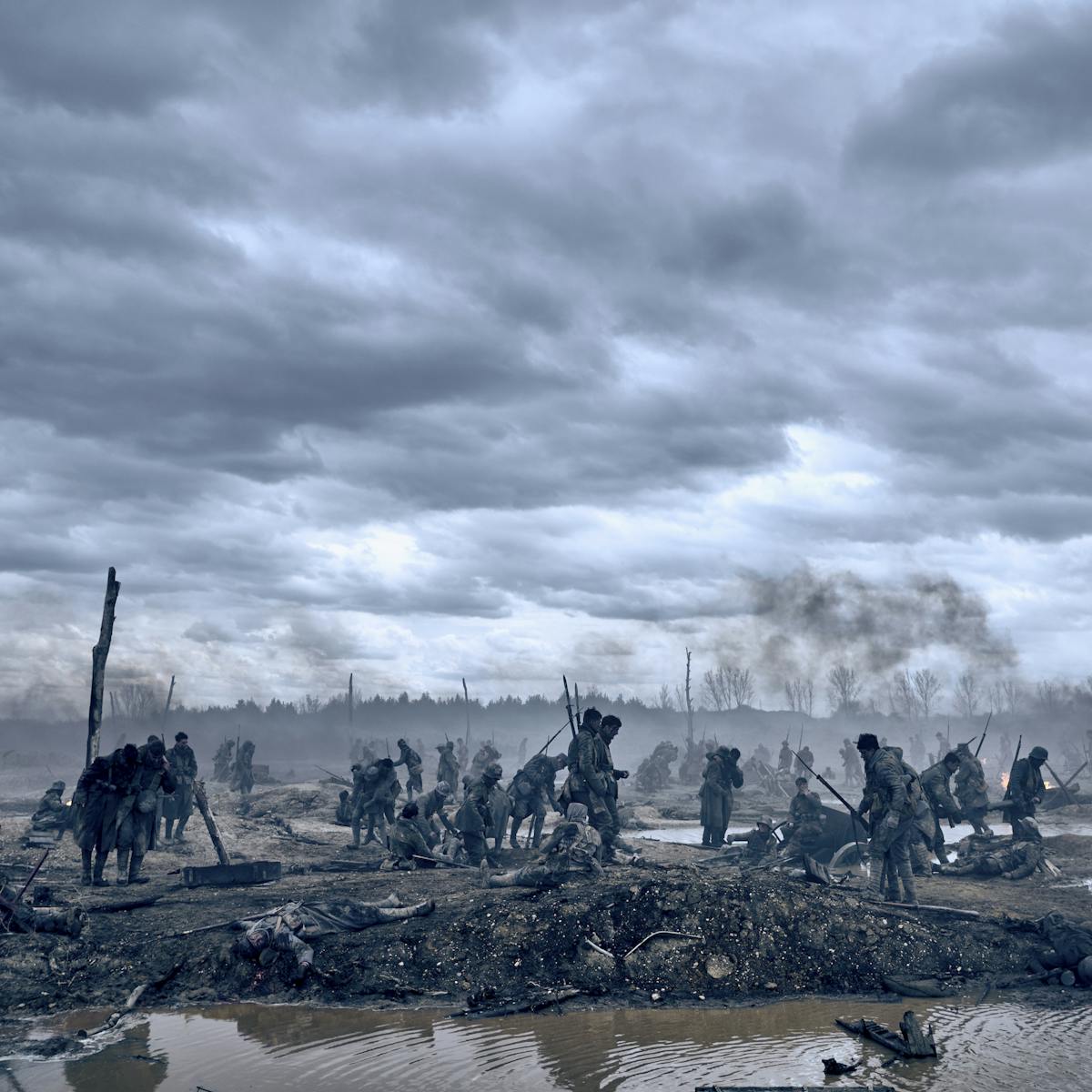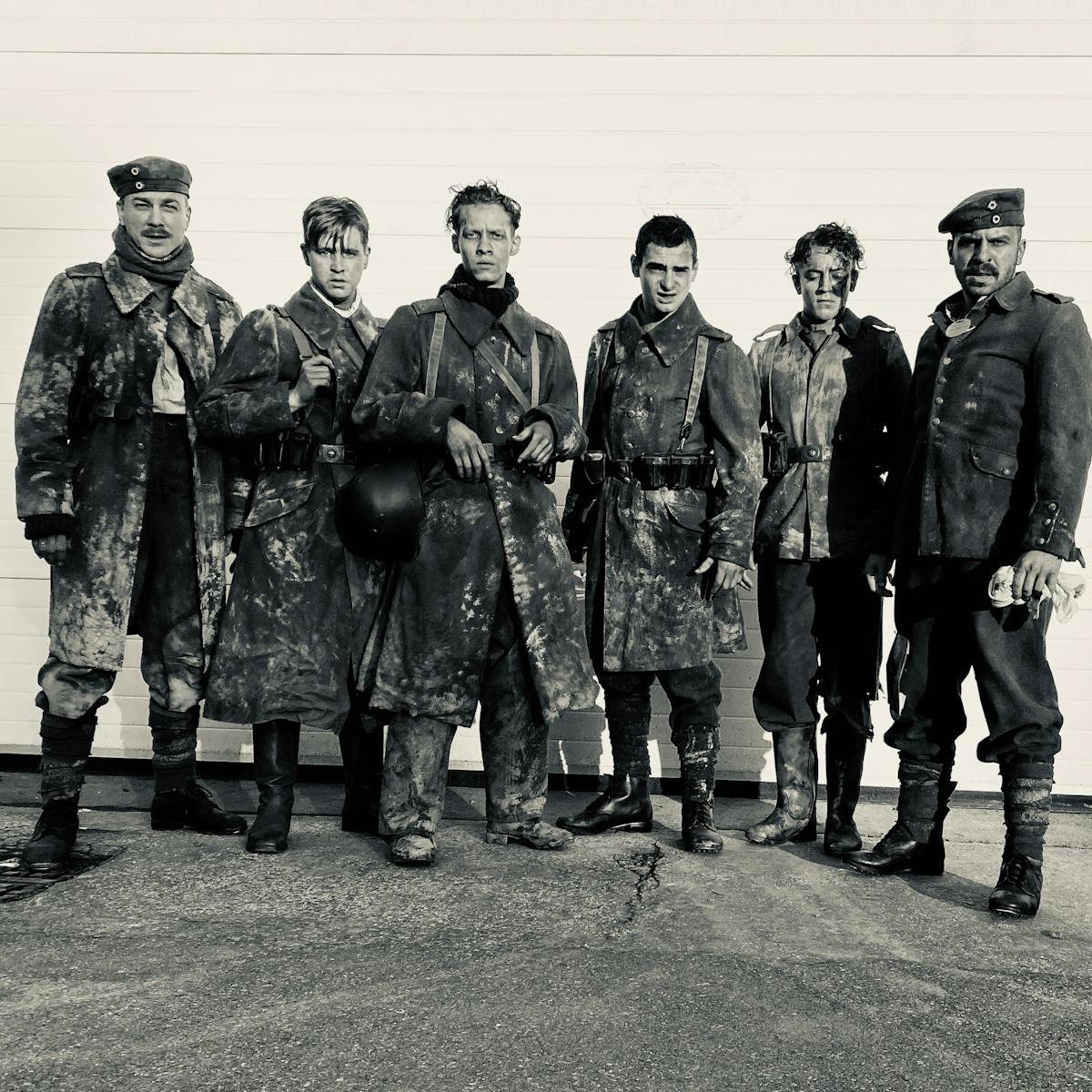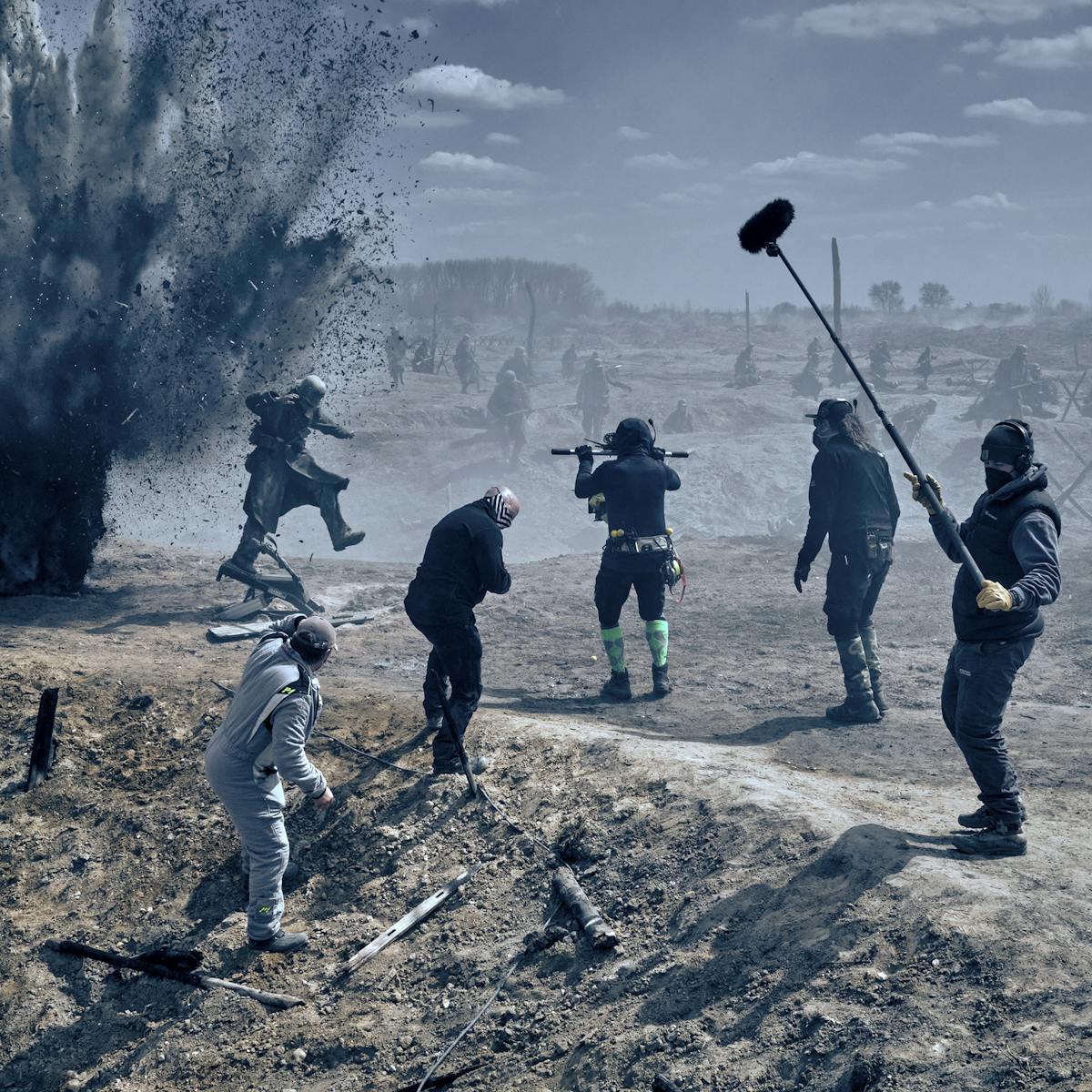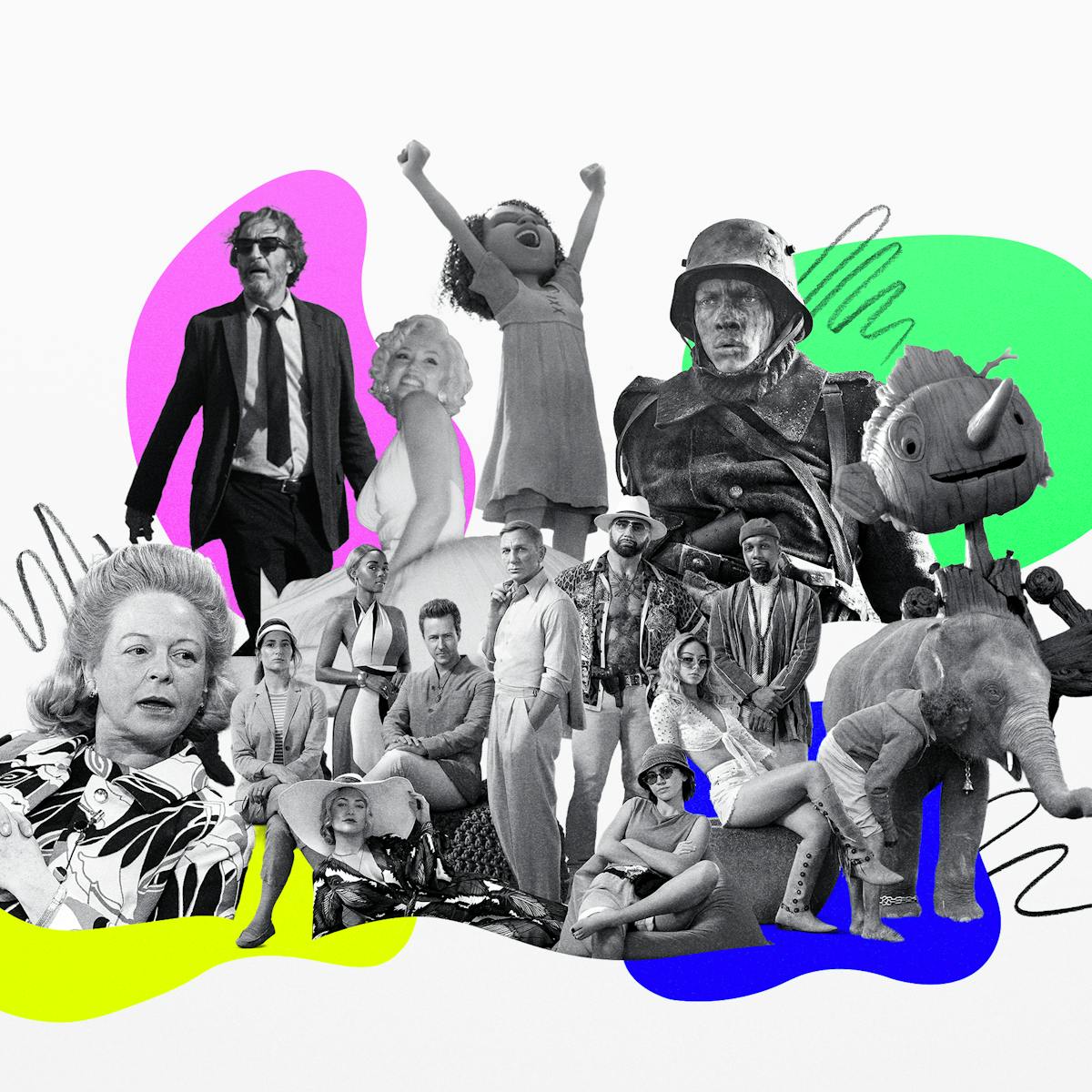James Friend tilts the lens towards an authentic exploration of war.
Even in 1917, three years into World War I, enlisting seemed an attractive option for young German men, convinced by propaganda that they might forge their identities on the battlefield and return home as national heroes. But as All Quiet on the Western Front’s protagonist Paul Bäumer (Felix Kammerer) discovers, the war that sells itself as an epic adventure is a full-blown nightmare. After forging his parents’ signature, the way one might on a report card or a field trip consent form, to be allowed to join the cause, Paul learns far too late the horrific cost of conflict.
Based on the 1929 Erich Maria Remarque novel, the film spells out the terrors of the frontline experience through unflinching imagery courtesy of masterful cinematographer James Friend, who reteams with director Edward Berger after their previous collaborations on the 2018 miniseries Patrick Melrose and three episodes of Bryan Cranston drama Your Honor in 2020.
For Friend, the cinematography should contribute to the director’s vision without distraction: “To be perfectly honest, when I sat and watched [All Quiet on the Western Front], I forgot what was shot on 65mm and what was on large format. That is where I wanted to be; I didn’t want the audience ever to be conscious of it,” says the cinematographer, who recently received his first Oscar nomination for his work on the war film, which is also nominated for Best Picture. While telling young Paul’s story flawlessly, the cinematography does in fact call attention to itself: Gorgeously lit scenes harness winter’s dramatic light, a slow-traveling shot patiently glides along a row of exhausted men in the trench, awaiting disaster.
Breaking with every war film convention, All Quiet on the Western Front forges a truly original cinematic path. There is no hero, no conquest, no bravado, no redemption in this film. Just when it seems things couldn’t get worse, they do. By putting us at the center of the action — running alongside a panicked soldier or cowering beside mud-covered men crouching in the trenches — Friend captures the chaos of war with a fresh lens and juxtaposes those frenetic scenes with the too-quiet moments in between when a soldier’s mind begins to wander.
Phedon Papamichael, the twice Oscar-nominated cinematographer of Nebraska and The Trial of the Chicago 7, found himself enraptured by what Friend achieved: “You have these very cinematic shots that alternate between the serenity of the trees, the forest lighting, and then these intense moments of the faces of these young boys [which] are just incredible.” says Papamichael. “How it was handled, with the lensing and also the music, how it all created this mood: It was operatic, but also the style didn’t dominate. It became very harmonic and really drew me into their perspective of it, their arc of this enthusiasm of joining and going [to war], and the tragedy of it.”
Here, cinematographer James Friend discusses All Quiet on the Western Front with Papamichael.
A bleak scene from the thick of it
Phedon Papamichael: I was truly fascinated by this movie. You guys found a way to balance the scope of this, of what you come to expect from doing a World War I trench movie. I really got captivated by the makeup, the details, the texture, the crust on the faces — it really just pulled you into the story. It seems like you and Berger are very much in sync, and you can tell there’s definitely a strong collaboration here. I want to know how you got involved, how you found this, and how you first started communicating with the director.
James Friend: Edward and I first collaborated on a television series called Patrick Melrose back in 2018. Then, he invited me out to New Orleans to shoot another series called Your Honor, and we realized that we were very much on the same page and like telling the same stories, but also similar aesthetics. If I didn’t like something and he didn’t like something, we both managed to massage each other’s sensibilities into that dynamic. He mentioned to me during Your Honor that they were thinking about adapting All Quiet into a movie or reimagining.
I adored the literature, and it’s something I studied as a boy. The opportunity felt too good to be true, to be perfectly honest. And then, he said to me, “Oh, yeah. It’s all going to be in German.” I don’t speak a word of German. I thought that the producers were going to say, “No, we need to hire a German cinematographer.” But Ed stuck to his guns. I had a lot of anxiety about it, up until the first day of rehearsal. Then, when we started to line things up, it all started to really crystallize.
Because of COVID, we actually locked ourselves in a hotel room for about six weeks in Berlin and we shot-listed and storyboarded the entire picture. I [usually] like to block a scene and see how it naturally, organically works. Weirdly, we didn’t have a lot of the locations while we were doing this process, so it was more about, How do we retrofit this shot list into this location and make this blocking work?
But also because so much of it took place in the trenches, we actually had the luxury of building the trenches to the shocks. I’d never worked that way. Eventually, we found this place called Milovice outside of Prague, an old Soviet air base. I can only presume that for aviation purposes it needed to be built east to west because it was literally laser-line perfect.
Stanislaus Katczinksky (Albrecht Schuch) and fellow soldiers
PP: Something like this wouldn’t be possible if you and Ed didn’t have a similar sensitivity of composition. It’s so crucial to the cinematographer-director relationship just because he can make any movie a million different ways, but if you have somebody who has a similar sense of lighting and understands the visuals and editing, it’s important.
JF: Ed and I have very similar sensibilities as far as framing, especially with the battle sequences. We didn’t want to run five cameras on it because it just was not that kind of movie. We wanted the camera to be moving through the protagonist’s space. But also the reset time: By the time we say, “Let’s go again,” an hour and a half has gone by because they’re reloading all of the air cannons and all the explosions and special effects. And then, the sun’s moved, and it’s nowhere near as good.
So, there was this real ballet. I really feel that, at least at the point in my career, this has most certainly been the most immersive collaborative experience so far. I’ve learned a lot from everyone. If everyone talks to each other and really has transparency, then you can end up with quite a good product at the end of the day, whereas if you don’t, if everyone’s so precious, and it very much is like that on many projects, then things can suffer and fail.
PP: You also shot in the winter, so you probably had short days, right?
JF: Yeah, tiny windows of light, but very dramatic light at the same time. Silvery light was the terminology we came up with.
On the front lines
PP: It is, I think, the hardest for a cinematographer — dealing with these day exteriors. It’s the one thing we can’t really control. The director has to understand that and be on board completely, and I think you guys really maneuvered that so well.
JF: Yeah, I remember walking into the production offices and basically saying, “This is how I want to approach it,” and everyone just jumped on board, especially Ed, who’s very aesthetically minded and also has a lot of faith in me. If I say something, he’ll never really question it. We’ve got such a relationship that he’ll know that I have bloody good reasoning for it. Sometimes, if we did need to move around, he would be patient enough to wait for a cloud or whatever. I learned a lot on that film as far as how to navigate a production of such scale with natural light because when you’ve got a crew of how many hundred waiting around and you’ve got extras waiting around at the same time, you can see the dollar signs and pound signs burning away. And you’ve got someone looking at you saying, “Well, what are we waiting for?” And it’s literally all on me, and it’s very easy for me to go, “Well, let’s turn over,” just to keep that person happy.
PP: If the director is on board with it, it does pay off visually [to wait]. But I was wondering, in order to maximize your day, did you do splits where you did go into night work or did you consistently use the dusk window to shoot certain sequences over a period of multiple days? The night scenes are so beautiful in a way. This horrific setting of the field of death, and then the flares and the beautiful atmosphere — there is sort of this operatic beauty to it.
JF: A lot of the night work we did as one chunk, but we were completely goosed by the fact that it started to snow. So, our special effects team were basically hosing down the set to try and melt the snow. But then, obviously, it would turn into ice. So, it was really edge-of-your-seat kind of stuff, but we were very lucky with the cast because they were also on board with it. And it definitely took a bit of skill from every department to try and bring that to the table.
PP: I do like the discipline of how you construct the movie. I see big war movies, big action movies, where it’s just apparent, like, “Okay, we’d have seven cameras in various positions.” And then, it’s just randomly cutting. For the large format decision, did you choose it just because of the epic scale, or is it also something about the feel of a falloff, that you chose the 65mm [camera] versus let’s say, an LF [large format sensor] or a regular?
Paul Bäumer (Felix Kammerer)
JF: We gravitate toward the wider end of the spectrum naturally, and putting the audience in the character’s space. So, we found this language with that, and I’d already done another television show on the VENICE [digital cinema camera]. So, [Edward] really responded to that. And then, when it came up to do Your Honor, we shot on the VENICE, and we kind of fell in love with that language. When this film came about, I said, “Well, look, we could go one step further, and that’s the 65, but it does come with its limitations as well.”
So, I flew to London from Berlin, and I shot a lot of tests. We both went to Barrandov Studios in Prague, and we screened them, and he was like, “I absolutely love it.” And then, he gave me this lovely sort of problem to have, which was, “Well, you select the scenes that you want to do on the 65.” I knew that when we’re going to run across the battlefield, the LF was the natural choice because of the equipment and the logistics, but also, I didn’t want to be forced onto a longer lens to get a certain shot. I still wanted that proximity to the character.
So, we actually found that scenes that I felt had a bit more gravity to them, like Katczinsky getting shot by the boy, for example — we did all that on the 65. Everything before that was actually on the LF, but they blend perfectly. During the scene at the dinner table, the camera never moved: it’s with Von Brixdorf [Sebastian Hulk] and General Friedrichs [Devid Striesow] just talking, that big long composition shot of the table. It was shot in an 18.5[mm] lens. Also, my favorite scene in the film is actually when Paul Bäumer gets his uniform for the first time.
PP: Yeah, I love that.
JF: That was all on location in Prague, and we shot that at night with these lighting balloons that we had to have made with L.E.D.s. We didn’t know if it was going to work or not, but it did, thank God. And we just about had the right amount of exposure, but that was on the 65, and I think that it brought something to it. I don’t want to get all arty-farty, but it just worked to my eye. When you remove yourself from it and you sit and watch it all, I forgot what lens was what. That, to me, is more what filmmaking is about. I would say that’s the thing I’m the proudest of.



